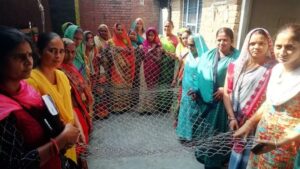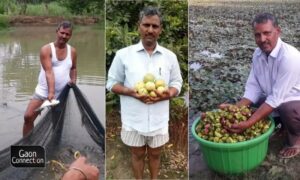No tempering in an Indian kitchen is complete without the addition of asafoetida or hing. Yet, most people are unaware that the hing is an import from a neighbouring country, Afghanistan. But not for long.
The Institute of Himalayan Bioresource Technology in Palampur that comes under the Council of Scientific and Industrial Research (CSIR) has started cultivation of hing (Ferula asafoetida) in the country.
The process began in 2018, when the National Bureau of Plant Genetic Resources (NBPGR) under the Indian Council of Agricultural Research (ICAR), procured seeds of the asafoetida plant from Iran.
Also read: Farmers in Himachal Pradesh take to cultivating saffron
“It was a long process to get the seeds from Iran. And, before the seeds could be used, the NBPGR had to ensure they carried no disease with them into the country,” Sanjay Kumar, director of Institute of Himalayan Bioresource Technology, told Gaon Connection. “We did a lot of research on cultivating the plant before we collaborated with farmers to start the process of cultivation about two years ago,” he added.
According to Sharma, the farmers are pleased with the results. “In two or three years we should have hing cultivation in the country,” he said.
Hing takes root in India
Saplings grown out of high quality seeds from Iran were planted at the Centre for High Altitude Biology in Lahaul-Spiti in Himachal Pradesh, and subsequently planted at several other places in the state as an experiment.
Also Read: Turmeric, a new and inexpensive preservative, for storing seeds and grains
On October 15, 2020, the first experiments at growing hing in the country began at Madgran, Billing, and Keylong in the Lahaul Spiti valley in Himachal Pradesh.
Saplings were also planted at Kataru, Majhkhali, Janjehli and Ghayan in Mandi district of the state. In Kinnaur district they were planted in Mebar, Kothi, Dunni, Reckong Peo and Powari.
The experiments in growing hing began after the farmers were trained in its cultivation.
Historic day as Asafoetida cultivation starts in India for the first time. Despite essential ingredient of most Indian cuisine, it's all imported. Thanks to @CSIR_IHBT this is going to change.@AgriGoI @CSIR_IND @icarindia pic.twitter.com/i49Onw9SFH
— Shekhar Mande (@shekhar_mande) October 17, 2020
“Approximately 3.5 hectares of land in Lahaul Spiti, Kinnaur, Chamba and Mandi in Himachal Pradesh are under cultivation,” Ashok Kumar, principal scientist and the coordinator of the hing cultivation project at Institute of Himalayan Bioresource Technology, told Gaon Connection.
Scaling up
So far nearly 20,000 saplings grown at the nursery in Institute of Himalayan Bioresource Technology, Palampur have been distributed free of cost to the farmers in the state. In the past two years, 373 farmers, who were part of the project, were trained to cultivate hing, and 167 of them have already begun hing cultivation.
According to Ashok Kumar, it takes five years for the hing crop to be ready for harvesting. Each plant yields 25 to 30 grams of hing. One hectare of land has the potential of producing two and a half quintals of hing (one quintal equals to 100 kilograms).
The pilot project is a collaboration between ICAR and the Institute of Himalayan Bioresource Technology. The areas selected are environmentally suited for the cultivation of hing and the farmers are growing it under the supervision of agricultural scientists from ICAR.
India’s hing import expected to come down
According to the Institute of Himalayan Bioresource Technology, every year, India imports more than 1,542 tonnes of raw asafoetida and more than Rs 9,420 million are spent annually on it. Afghanistan, Uzbekistan and Iran are some of the countries India imports asafoetida from, with the lion’s share (90 per cent) coming from neighbouring Afghanistan.
Also Read: The world’s second largest gene bank to preserve seeds comes up in India
According to Ashok Kumar, hing grows wild and abundantly in the mountainous terrains of Iran and Afghanistan.
Hing cultivation is possible in cold and dry climes such as Ladakh and parts of Uttarakhand, besides Himachal Pradesh. Scientists and farmers hope soon the hing requirement in India will be fulfilled indigenously.
Read the story in Hindi



















